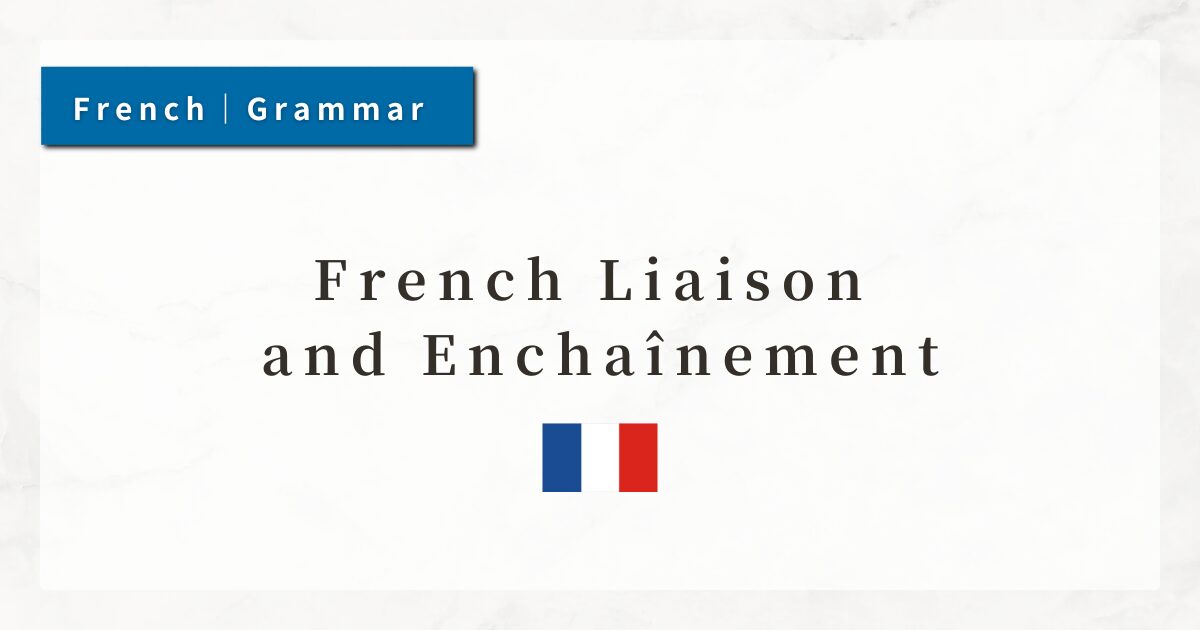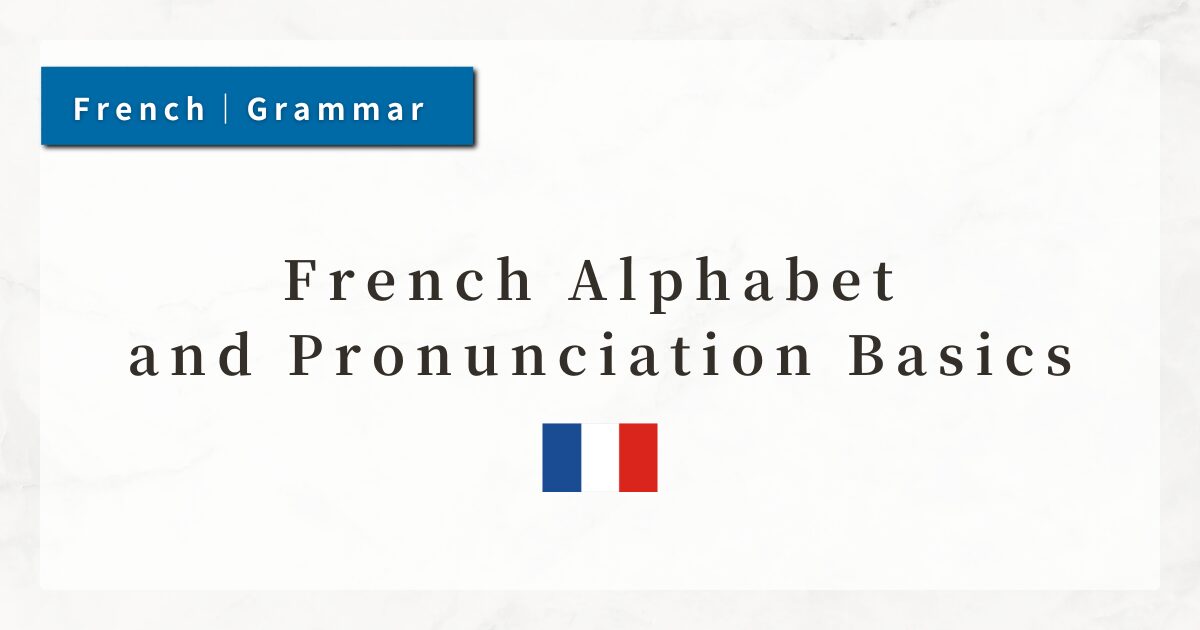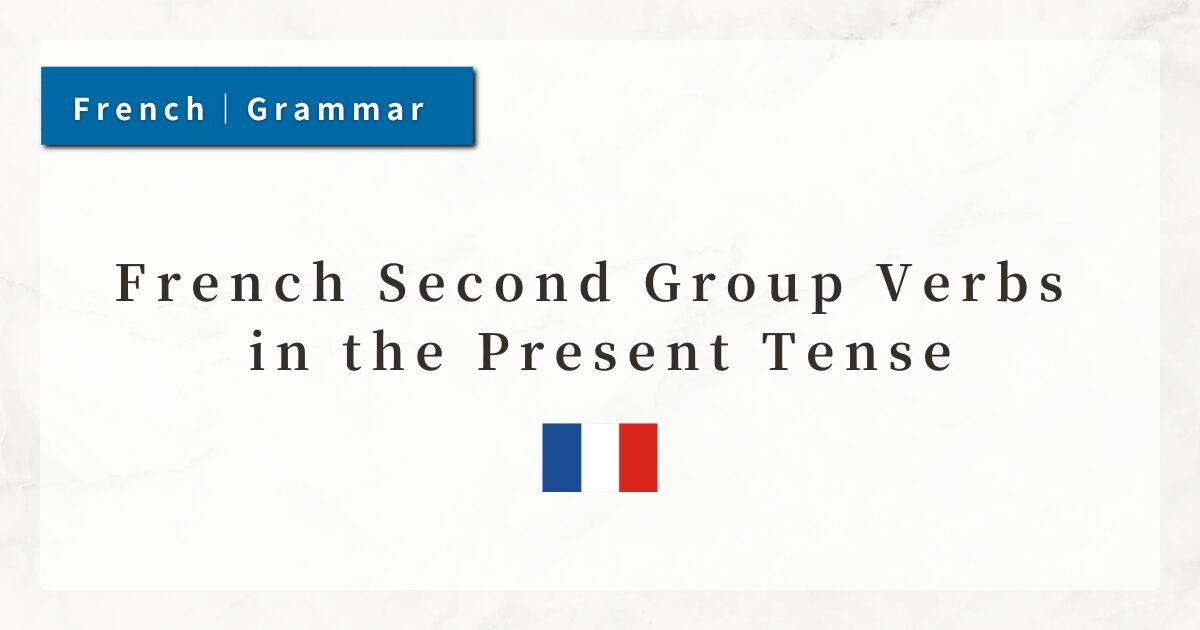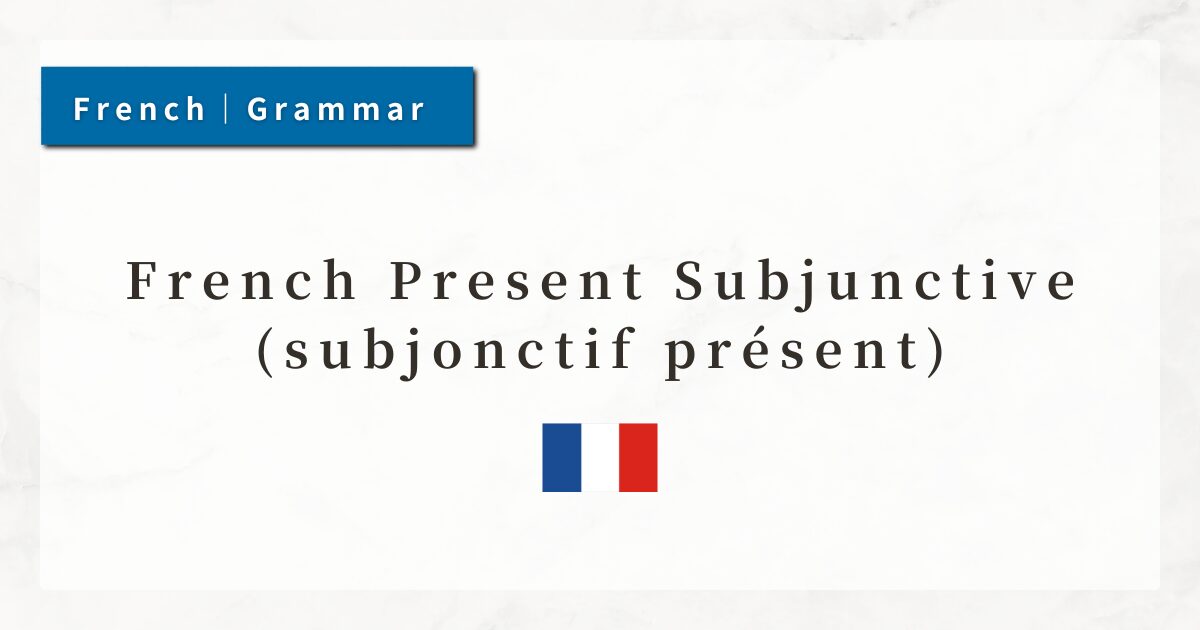#5 French Liaison and Enchaînement | Pronunciation Rules Explained

When learning French, have you ever noticed that “words seem to blend smoothly into each other” when spoken? This is due to specific phonetic phenomena unique to French.
Two of the most important of these are liaison and enchaînement. They are directly connected to accurate pronunciation and listening comprehension, and mastering them is essential for sounding natural in conversation.
In this lesson, I will explain the difference between liaison and enchaînement, their rules, and how to practice them effectively.
1. Basics of Liaison and Enchaînement
1-1. What Is Liaison?
Liaison occurs when a final consonant—normally silent—is pronounced because the next word begins with a vowel or a mute h.
- vous avez → [vu ‿ z ‿ ave]
(The final “s” is pronounced as [z] and linked to the following vowel.)
Depending on the context, liaison may be:
- Mandatory
- Optional
- Prohibited
1-2. What Is Enchaînement?
Enchaînement occurs when a final consonant that is already pronounced links smoothly to the following word.
- avec elle → [avɛ ‿ k ‿ ɛl]
The difference from liaison is that in enchaînement, the consonant is not “revealed” by the link—it was already pronounced.
Instead, it is simply carried over into the next word for a smoother sound.
2. Cases Where Liaison Is Mandatory / Optional / Prohibited
Liaison is not performed at random—it follows specific grammatical and stylistic rules.
2-1. Mandatory Liaison
Occurs in fixed grammatical environments:
- Pronoun + Verb: ils ont, vous êtes
- Article + Noun: les enfants, un ami
- Number + Noun: trois heures, deux hommes
If omitted, the sentence may sound unnatural or even be considered grammatically incorrect.
| French | Pronunciation | Meaning |
|---|---|---|
| les enfants | [lez ‿ ɑ̃fɑ̃] | the children |
| vous avez | [vu ‿ z ‿ ave] | you have |
| un ami | [œ̃ ‿ n ‿ ami] | a friend |
| ils ont | [il ‿ z ‿ ɔ̃] | they have |
2-2. Optional Liaison
Occurs in less rigid contexts, such as:
- Conjunction + Pronoun
In formal speech (news, public speaking), liaison is more likely to be used.
In casual conversation, it is often omitted. This type of liaison can help adjust the tone of speech.
2-3. Prohibited Liaison
Liaison must not be made in the following cases:
- Noun + Noun
- Subject + Verb
- Noun + Adjective
Using liaison here can sound unnatural or even change the meaning.
3. When the Final Consonant Changes in Liaison
In liaison, the final consonant that appears may not be pronounced exactly as written. Each consonant has a fixed liaison pronunciation pattern.
3-1. Final Consonant s / x → [z]
This is the most frequent pattern. When a word ending in s or x is followed by a vowel, the consonant is pronounced as [z].
- vous avez → [vu ‿ z ‿ ave] (you have)
- trois amis → [tʁwɑ ‿ z ‿ ami] (three friends)
- deux enfants → [dø ‿ z ‿ ɑ̃fɑ̃] (two children)
3-2. Final Consonant d → [t]
When a word ends in d, it changes to a [t] sound in liaison. This is a significant spelling–sound difference.
- grand homme → [grɑ̃ ‿ t ‿ ɔm] (great man)
- second étage → [səgɔ̃ ‿ t ‿ etaʒ] (second floor)
3-3. Final Consonant n
In liaison, n remains [n], but when combined with nasal vowels, the pronunciation requires care:
- un ami → [œ̃ ‿ n ‿ ami] (a male friend)
- mon ami → [mɔ̃ ‿ n ‿ ami] (my friend)
4. Usage and Notes on Enchaînement
4-1. Conditions for Enchaînement
Enchaînement occurs when:
- A word ends with a consonant that is pronounced.
- The following word begins with a vowel or mute h.
There is no pause between words, and they are pronounced as if forming one continuous unit.
4-2. Why Does Enchaînement Occur?
French tends to flow without interruptions between words. While English and Japanese often insert slight pauses between words, French links them smoothly into rhythmic groups.
Enchaînement is therefore a natural feature of French prosody, contributing to its characteristic fluidity.
5. Summary
- In French, linking sounds between words is a normal part of speech.
- Liaison is the appearance of a normally silent consonant for grammatical reasons. Mastery involves knowing when it is mandatory, optional, or prohibited.
- Enchaînement is the smooth linking of an already pronounced consonant to the next word.
- Both phenomena can make listening comprehension challenging but are key to sounding natural in French.




